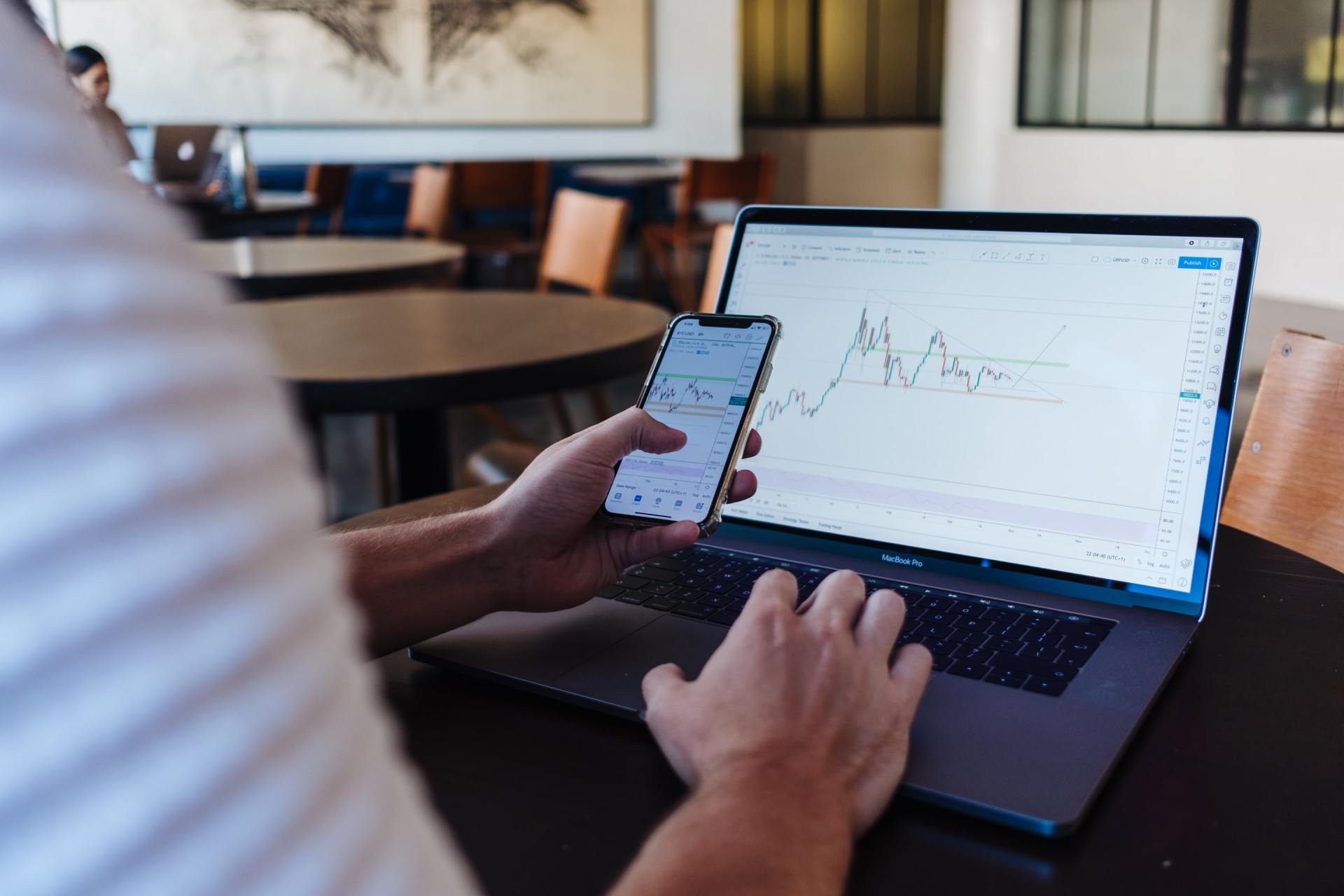Blog Layout
Market Commentary | October 2019
Rob Kellogg, CFA® • Nov 05, 2019
THE MARKET
The beginning of October caused some concern for investors as the S&P 500 Total Return Index (S&P TR) was down 2.78% as of the close on October 8th.
However, the market continued its positive run in 2019 as the S&P TR increased 2.17% in October and is up 23.16% year to date as of market close on October 31st.1
The Dow Jones Industrial Average (DJIA) was up 0.48% for the month and is now up 15.94% on the year. The
NASDAQ was up 3.66% for the month and is up 24.97% on the year.2
The first week of October sparked fears of the imminent market downturn but those quickly disappeared following the 3.5% increase in the S&P TR from October 8th through October 15th.1 It seems as though the average investor has a constant fear of recession largely in part due to the length of the current bull market. The average bull market lasts 4. years, and the current bull market is now over 10.5 years old, already over double the average timeframe.3 Surely it must end soon? A quote from Anne Kates Smith of Kiplinger, “One thing to remember is that bull markets don’t die of old age alone. Something’s got to kill them. And the surest weapon is a recession”.4
According to well known financial analyst Gary Shilling, we’re already in a run-of-the-mill recession where GDP may decline 1.5% instead of the almost triple 4.3% decline during the 2007-2009 Financial Crisis.5 An argument can be made either way regarding whether we are in a recession or not, but if we are in a recession and a recession kills a bull market, does that mean we should exit the market?
On the contrary, taking a more optimistic view, we believe that we’ve been experiencing a broad market correction since the beginning of 2018 caused by three, maybe four, corrections and rebounds. The S&P TR fell 6.13% February and March of 2018, but then recovered to earn 7.28% from April through July of the same year. The index then fell 6.84% in October of 2018, increased by 2.04% in November, and then fell again in December by 9.03% for a total loss of 13.52% in the fourth quarter of 2018. That’s quite the large correction, but it was already placed in the rearview when the index gained 18.25% in 2019 by the end of April. We then saw a large decrease of 6.35% in May followed by an immediate full recovery of 7.05% in June. Since June we have had steady month over month growth with one slightly negative month in August.1 If you pulled out of the market when things were going poorly after the fourth quarter of 2018 or in May of 2019, you would have missed the rather quick recoveries in the first quarter and June of 2019.
All of this is to say that while it has not been the smoothest ride, there has been overall market growth the last two years despite some very large negative performing months. Since January 26th of 2018 through October 31st of 2019, the S&P TR is up 9.5%.1 Bringing it back full circle, these numbers are why it is important that we don’t overreact the first week of a month like the one that we had in October. There is going to be volatility. There will be ebbs and flows. It’s important to stay disciplined in your investment allocation and not to try and time the market.
The Fed
The United States labor market remains strong, economic activity is rising modestly, and the unemployment rate has remained low even as job gains have been good. In order to sustain these economic conditions as well as getting inflation closer to the 2% target to maintain price stability, the Fed, or the FOMC (Federal Open Market Committee), decided to cut the target range for the federal funds rate by 25 bps to 1.50% - 1.75%.6
While this is the third rate cut, the Fed sees no need for immediate future rate cuts unless the economy weakens significantly according to Chairman Jerome Powell, “Monetary policy is in a good place”.7
The Fed lowers interest rates in order to stimulate economic growth. Lower rates mean lower financing costs which encourage borrowing that leads to investing and spending. If rates are too low, you can have too much growth leading to high inflation which prevents a continuing economic expansion. While economic activity is good, there is a slight need to raise interest rates which is likely the main driver for the recent rate cuts. These rate cuts should allow economic activity to remain strong but not too strong, and they should also tick inflation up closer to the Fed’s target of 2%.
CURRENT EVENTS UPDATE
US-China Trade Talks
Trade negotiations between the United States and China are still causing short term market volatility as headline news seems to change week to week. President Trump announced that Phase One of the deal with China had been agreed to on Friday, October 11th, causing the market to rise.8 Phase One was less comprehensive than initially thought as December tariffs were still in question and there was no news on how Huawei would be handled. The trade deal was expected to be signed between the two countries at an economic conference in Chile in November, but Chile recently cancelled the conference because of riots and protests.9 President Trump said that they will announce a new site soon and move forward with Phase One being a large portion of the China deal.
Stocks fell slightly on October 31st due to trade talks after Bloomberg reported that a Chinese official said a more comprehensive plan between the two countries is unlikely to happen in the near future.10
However, on November 1st, the Chinese Ministry of Commerce said that the two sides have come to an agreement on core trade issues causing the S&P Index to increase almost a full percent that day.11
Remember that these short-term movements are mostly in part due to headline news regarding trade negotiations between the two countries and not to be alarmed with each and every market increase and pull back.
Brexit
At the start of the month, Brexit was still scheduled for October 31st. There were early signs of progress, but the key issue remained regarding border management between Northern Ireland (Great Britain) and Ireland (European Union). Prime Minister Boris Johnson had until October 19th to reach a deal otherwise he would need to request a third extension for Brexit. It looked as if a deal has been reached between British government and the European Union regarding the border management until British Parliament decided to meet on a Saturday (October 19th) for the first time since 1982 and refused to move the deal to a vote. However, Boris Johnson did not ask for the extension and eventually British Parliament approved the idea of the revised plan with one caveat. They would not vote on the plan until after the October 31st deadline meaning an extension would be necessary that would likely move the Brexit deadline to the end of January
in 2020.13
To make things more interesting, Prime Minister Johnson called for a snap election to occur on December 12th which was at first rejected before being unanimously approved. Johnson is betting that his Conservative party can win a majority in Parliament by selling their Brexit plan to the public, but there is great risk that neither party could win a clear majority leaving Parliament being even more divided than it is today. Great Britain’s previous Prime Minster prior to Johnson, Theresa May, had called for a snap election in 2017. The 2017 election actually decreased the party majority in Parliament which many believe was the beginning of the end for May’s time in office.14
It’s been over three years since Great Britain voted to leave the European Union and the country is on it’s third Prime Minister after David Cameron resigned in 2016 followed by Theresa May in 2019. An an optimist, one would hope that the December 12 snap election will lead to a Conservative Party majority and Brexit deal in January of 2020. Expect November to be a lot of headlines and campaigning to the British public.
Continuing with the theme of Europe, as we discussed earlier this year, Mario Draghi is now out as the President of the European Central Bank. On November 1st, Christine Lagarde will take office.16
Final Note
Volatility has decreased significantly since we last discussed it in August’s commentary. The VIX (CBOE Volatility Index), which is a measure of the market’s expectation of volatility, averaged 18.98 in August of this year which was its highest for a month since the beginning of the year in January. The VIX then averaged 15.56 in September and 15.47 in October.17 Usually a lower VIX signal more market gains. But even with the low volatility, it took until October 28th for the S&P TR to surpass its previous yearly high from July.1 With United States stocks trading near their all-time highs, market growth has been kept in check due to lack of progress on the United States-China trade negotiations, strong economic activity but questionable effects of the recent rate cuts, and uncertainty surrounding Brexit with its new timetable. You should look to rebalance to your initial asset allocations based on your risk tolerance as these uncertainties can cause market volatility to increase. November should provide color on the United States-China trade talks, December should on Brexit, and both of those months should paint a clearer picture on how the economy reacts to the most recent rate cuts.
Returns are based on the S&P 500 Total Return Index, an unmanaged, capitalization-weighted index that measures the performance of 500 large capitalization domestic stocks representing all major industries. Indices do not include fees or operating expenses and are not available for actual investment. The hypothetical performance calculations are shown for illustrative purposes only and are not meant to be representative of actual results while investing over the time periods shown. The hypothetical performance calculations for the respective strategies are shown gross of fees. If fees were included returns would be lower. Hypothetical performance returns reflect the reinvestment of all dividends. The hypothetical performance results have certain inherent limitations. Unlike an actual performance record, they do not reflect actual trading, liquidity constraints, fees and other costs. Also, since the trades have not actually been executed, the results may have under- or overcompensated for the impact of certain market factors such as lack of liquidity. Simulated trading programs in general are also subject to the fact that they are designed with the benefit of hindsight. Returns will fluctuate and an investment upon redemption may be worth more or less than its original value. Past performance is not indicative of future returns. An individual cannot invest directly in an index. Advisory Services offered through ChangePath, LLC a Registered Investment Adviser
"The average bull market lasts 4. years, and the current bull market is now over 10.5 years old, already over double the average timeframe."
"We’re already in a run-of-the-mill recession where GDP may decline 1.5% instead of the almost triple 4.3% decline during the 2007-2009 Financial Crisis."
"There has been overall market growth the last two years despite some very large negative performing months."
"The Fed, or the FOMC (Federal Open Market Committee), decided to cut the target range for the federal funds rate by 25 bps to 1.50% - 1.75%"
"President Trump announced that Phase One of the deal with China had been agreed to on Friday, October 11th, causing the market to rise."
"It looked as if a deal has been reached between British government and the European Union regarding the border management until British Parliament decided to meet on a Saturday (October 19th) for the first time since 1982 and refused to move the deal to a vote. "
Source (15) - Northern Ireland/Ireland border issue at the center of the Brexit hold up

03 Dec, 2021
November was a dizzying month for investors. The highlight? Earnings. 82% of companies1 beat estimates this quarter, despite headwinds such as supply chain constraints and inflation. The market’s biggest muse? Elon Musk’s twitter handle, with tweets such as (paraphrased) “should I sell 10% of my Tesla stock?” The most exciting job? Fed watcher. We started tapering, saw a plethora of hot inflation data, and gleaned insight from Federal Reserve Chair Jerome Powell on the last day of the month. November 2021 Market Returns

03 Dec, 2021
October was another positive month for the markets after September’s pullback. So far in 2021, the S&P 500 had nine positive performing months, September being the only hold out. The index ended up 6.9%, even though the first week of the month started a bit volatile. However, 2021 is looking robust, even if November and December aren’t large contributors, as the YTD performance through October is 23.9%. 1

By Rob Kellogg, CFA®
•
07 Oct, 2021
September ended the streak of seven positive months in a row for the S&P 500 as it was the first negative month for the index since January of this year. The index ended the month down 4.76%, but it is still up nearly 15% on the year. That is the worst monthly decline for the index since March of 2020 when it fell 12.51%. 1

By Rob Kellogg, CFA®
•
07 Sep, 2021
August was one of the year’s best months for the investors as the S&P 500, the Dow Jones Industrial Average (DJIA), and the NASDAQ Composite each hit new all-time highs. It is the seventh straight month of increases for the S&P 500 as it finished the month up 2.90%, and the index is now up 20.41% for the year. 1 Coming in alongside market highs was earnings growth as 98% of companies in the S&P 500 have now reported for the second quarter. Earnings were expected to be higher this year relative to the lower levels caused by the virus in 2020 as estimates for second quarter earnings growth came in at 63%. However, with almost all companies having reported, earnings growth significantly outperformed expectations as it came in at 89% helping the market reach new highs. 2

By Rob Kellogg, CFA®
•
05 Aug, 2021
The S&P 500 continued to climb for the fifth straight month as the index hit a new all-time high on July 29 th . 1 The index finished the month up 2.27% and is now up 17.02% on the year. The Dow Jones Industrial Average (DJIA) and the NASDAQ Composite both increased during the month as well finishing up 1.26% and 1.20% respectively. Both indices are now comfortably in double digit returns for the year. Small cap stocks took a significant hit as the Russell 2000 fell 3.65% during the month, but it is still up 12.73% on the year. As investors move some of their equity gains into fixed income and the Fed continues with their asset purchases, bond demand has increased leading to a return of 1.12% for the U.S. Agg in the month of July. It is now down just 0.50% on the year. 2

By Rob Kellogg, CFA®
•
05 Jun, 2021
The S&P 500 Index continues to climb in June as it finished the month up 2.22% leading to a 14.41% increase on the year. The technology heavy NASDAQ led the way during the second quarter as it was up 9.50% on the quarter following a strong June, and it is now up 12.50% on the year. The Dow Jones Industrial Average (DJIA) did not follow suit during the month of June as it was down 0.08%, but the index is still up nearly 13% on the year. 1

By Rob Kellogg, CFA®
•
07 May, 2021
Equities fell on the last trading day of April as investors likely took their share of profits after positive news regarding corporate earnings and economic data. However, the major U.S. indices still finished in positive territory for the third straight month as the S&P 500 has hit 25 record highs thus far in 2021. 1

By Rob Kellogg, CFA®
•
05 May, 2021
The markets started off strong in May before running into inflation fears towards the middle of the month. After those fears were somewhat curbed by the Fed, markets rallied to end the month. The S&P 500 index is up nearly 12% on the year after it finished the month of May up 0.55%. This is the fourth positive month in a row for the index after it finished down just over 1% in January. The Dow Jones Industrial Average (DJIA) finished the month up nearly 2% and is now up 12.82% on the year. The technology heavy NASDAQ did not fair as well during the month as it declined 1.53% and is now up 6.68% on the year. Small cap stocks were relatively flat for the month as the Russell 2000 finished up 0.11%. The MSCI EAFE and EM indices both finished in positive territory as well. 1 As we enter the summer months, June has traditionally been a weak month for markets as the DJIA is averaging 0.12% over the last 50 years, and it is down an average of 0.7% over the last 20 years. However, July and August are traditionally good months for the index as it averages an increase of 3% over its 125-year history. 2

By Rob Kellogg, CFA®
•
08 Apr, 2021
After a volatile month, the S&P 500 finished at a record high when the markets closed on March 31 st . The index finished the month up 4.24% and is now up 5.77% on the year. As the economic recovery continues, the Dow Jones Industrial Average led the monthly performance numbers as it finished up 6.62% and is now up 7.76% on the year. The technology heavy NASDAQ finished the month in positive territory, but it continues to lag the other two indices after outperforming both in 2020. The index finished the month up 0.41% and is now up 2.78% on the year. Small cap stocks continued to inch higher as the Russell 2000 ended the month up 0.88% and is now up 12.44% on the year. The MSCI EAFE index is up just under 3% on the year after a positive month, however the MSCI Emerging Markets index fell 1.70% during the month and is now up 1.95% on the year. The Bloomberg Barclay’s U.S. Aggregate Bond index fell 1.25% in March and is now down 3.37% on the year. 1
P:
888.798.2360 F:
913.661.1183
6330 Sprint Pkwy Suite 400, Overland Park, KS 66211
Disclosure: Continuity planning offered through CreativeOne Wealth, LLC and CreativeOne Securities, LLC. CreativeOne Wealth, LLC. advisory services offered through CreativeOne Wealth, LLC, a Registered Investment Adviser. CreativeOne Securities, LLC. Member FINRA/SIPC and an Investment Advisor.
Privacy Policy | ADV Part 2A | Form CRS
© 2023 Creative One Marketing Corporation, CreativeOne Wealth, LLC and CreativeOne Securities, LLC.



